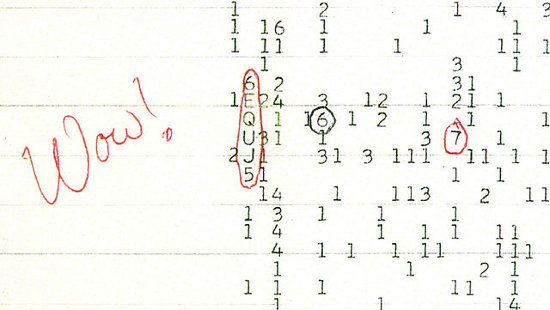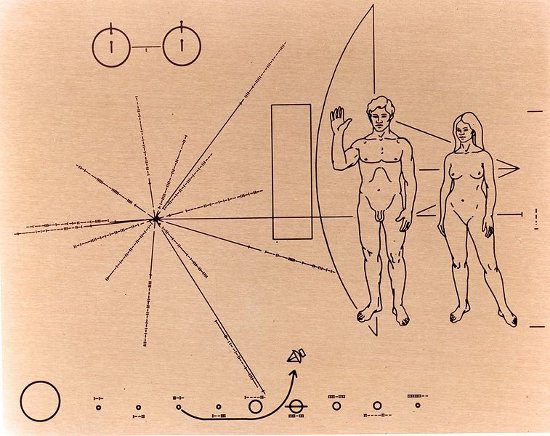
A couple of weeks ago the Arecibo Observatory in Puerto Rico sent a special radio signal to outer space. This was the symbolic "reply" to what has become known as the "Wow!" signal. The "Wow!" signal (Fig. 1) was picked up Aug. 15, 1977, while Ohio State University's Big Ear radio telescope was pointing toward the constellation Sagittarius. It was a strong narrowband radio signal, thought at the time to have the signatures of a potentially non-terrestrial origin, but it has never been detected again. No one truly thinks that the "response" would mark the beginning of a dialogue with an extraterrestrial civilization.
Still, the idea of communicating with other cosmic beings has long fascinated humans. This was not the first time we have tried to "converse" with our presumed galactic neighbors. On Nov. 16, 1974, a radio signal was transmitted from Arecibo to the star cluster M13, located about 25,000 light-years away. The signal contained some information about the atoms of life: hydrogen, carbon, nitrogen, oxygen, and phosphorus, about the structure of DNA and human genes, about the solar system, and about the Arecibo radio telescope itself.
But if those two signals could be considered the equivalent of today's email, humans have also sent two messages by "snail mail" -- actual physical objects, carried by relatively slow-moving spacecraft. One of those was a gold-anodized aluminum plaque (Fig. 2), which was sent on board both the Pioneer 10 and Pioneer 11 spacecraft in 1972 and 1973, respectively. The plaque, designed by astronomers Carl Sagan and Frank Drake, contained a number of symbols that were supposed to introduce humanity to an alien civilization that might intercept the spacecraft. It contained motifs representing phenomena ranging from atomic transitions of hydrogen and the relative position of the Sun in the Milky Way Galaxy, to a diagram of the solar system and figures of a man and a woman.

Figure 1. The "Wow!" signal (source)

Figure 2. Plaque attached to Pioneer 10 and 11 (source)
Unlike the biblical dove that Noah sent from his ark, expecting to obtain immediate information on the water level following the deluge, we do not expect the Pioneer plaques to evoke a response any time soon. The last, extremely weak signal from Pioneer 10 was received in 2003. Both Pioneer 10 and Pioneer 11 are expected to leave the solar system (Pioneer 10's distance from Earth was about 105 astronomical units in February of this year; 1 astronomical unit is about 93 million miles). Pioneer 10 is moving in the general direction of the star Aldebaran, but it would take it more than 2 million years to actually reach its vicinity.
Another message to extraterrestrials, this time in the form of a gold-plated phonograph record (Fig. 3), was put aboard the Voyager 1 and 2 spacecrafts. This record contains 115 images, a variety of natural sounds, music from different cultures and times, and greetings in no fewer than 55 languages.

Figure 3. Record attached to Voyager 1 and 2 (source)
Voyager 1 is currently more than 11 billion miles from the Sun, recently transmitting signs of bidding adieu to the solar system. Voyager 2 is trailing somewhat behind, at 9 billion miles. The two spacecraft are still ticking, and scientists continue to listen to them almost daily.
While nobody expects those physical messages to produce any scientifically significant results, they poetically represent expressions of an insatiable human curiosity. Thousands of years of wondering about the mysteries of the cosmos depicted by a few markings on two almost postcard-sized objects. Humanity's search for extraterrestrial life will continue. The Curiosity rover currently roaming the Martian terrain is looking for signs of organics; the upcoming James Webb Space Telescope will attempt to discover liquid water on the surface of extrasolar planets; and the Allen Telescope Array will continue to survey millions of stars for the potential transmission of intelligent signals. Our hunger for knowledge is boundless, and perhaps no other question intrigues us more than "are we alone?"